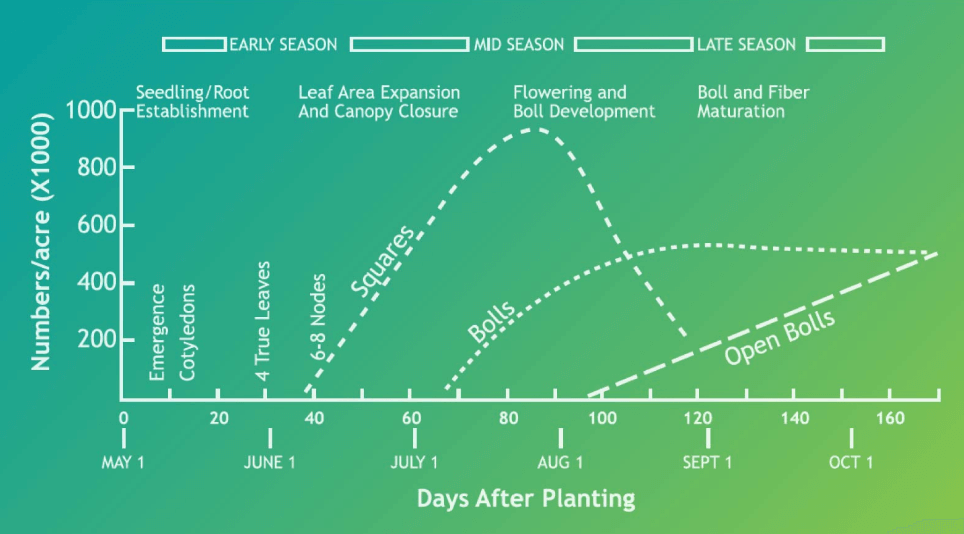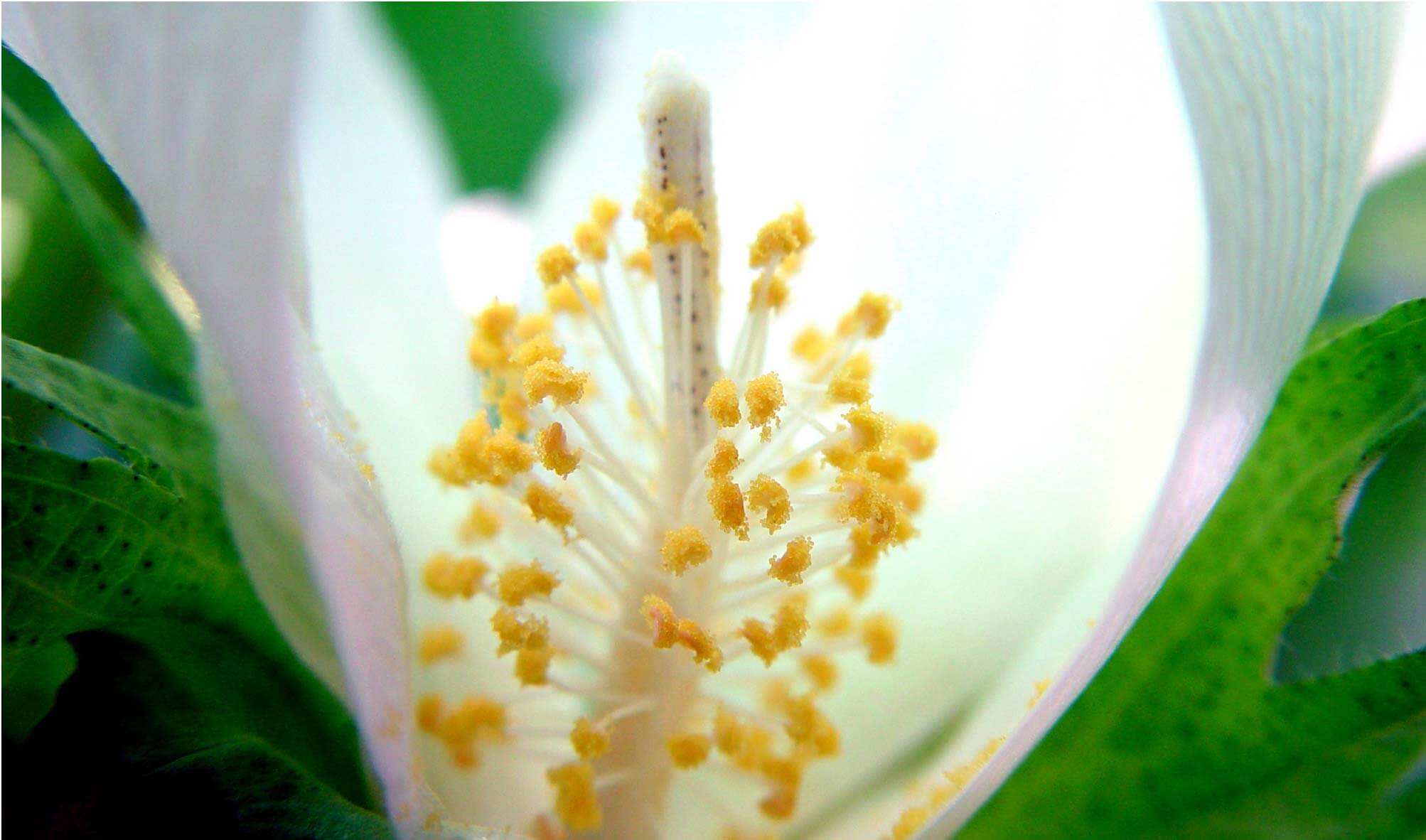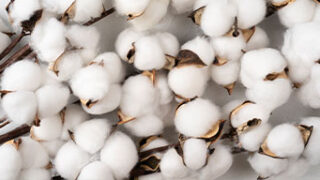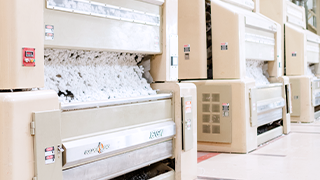Cotton Fiber Development & Maturation
Cotton Plant Development
A summary of the growth & development of a cotton plant—from seed germination to maturation.
Cotton plant development occurs in a very specific sequence of events. The stages of reproductive growth and cotton plant development must be optimized to ensure ideal fiber production. Developing a better understanding of the biological mechanisms of cotton plant growth and development is essential for the continued profitability of the cotton industry.
Each growth stage is critical for abundant fiber development. Individual seeds contain the embryonic plant for the next generation and after the seed goes through the fertilization process, cotton plant growth, fiber development, and maturation begin.
The five cotton plant growth stages include germination and emergence, seedling establishment, leaf area canopy development, flowering and boll development, and maturation.
The first three steps in fiber development—initiation, elongation, and secondary wall synthesis—take place while the fiber is living, and they’re controlled by the biological processes that regulate cell growth and development.
Cotton Plant & Fiber Development Stages
- Germination & emergence
- Seedling establishment
- Leaf area canopy development
- Flowering and boll development
- Maturation
Cotton Fiber Development & Processing E-book
Download the full e-book to get a detailed explanation of each stage or get an overview of the plant and fiber development stages below.
Cotton Fiber Development and Processing E-book
Seasonal Patterns of Plant Development
Although cotton is naturally a perennial plant, modern agricultural processes require that the crop be managed as an annual—re-planted and harvested each year to produce the largest and highest-quality yields possible. This combination of a perennial growth pattern and agricultural management as an annual results in tremendous variability in boll maturity at the time of harvest. Cotton plant development proceeds through five main growth stages: germination and emergence, seedling establishment, leaf area canopy development, flowering, and boll development, and maturation.

Cotton Seed Germination & Emergence
The cotton seed consists of a seed coat surrounding an embryo with two well-developed cotyledons (an embryonic leaf in seed-bearing plants).
The embryo axis consists of a radicle (embryonic root), a hypocotyl, two cotyledons, and a poorly developed epicotyl (embryonic stem).
Initially, cotyledons contain stored food that supplies the energy for germination and early development and they form the first green leaves after emergence.

The cotton seed contains a seed coat surrounding an embryo with two well-developed cotyledons. The embryo axis contains radicle, hypocotyl, two cotyledons, and poorly developed epicotyl.
Germination begins within the first few hours after moisture enters the seed. The result is increased oxygen uptake and the utilization of stored energy reserves to build new cells and tissues during embryonic growth. The seed/embryo swells as water is absorbed, and causes the seed coat to split. Under the most favorable conditions for germination, the radicle emerges through the pointed micropylar end of the seed in two to three days and the radicle becomes the primary root that grows downward into the soil.
After emergence and initial exposure to light, the cotyledons develop chlorophyll and develop the capability to synthesize food via photosynthesis.
The tissues between the radicle and cotyledons (i.e. the hypocotyl) grow rapidly and arch near the cotyledons. As the hypocotyl continues to elongate, the cotyledons and embryonic shoot are pulled up through the soil surface to complete “emergence.” During this process, the seed coat is typically shed and left behind in the soil.
When the cotyledons are free of the soil, they unfold and expand. After emergence and initial exposure to light, the cotyledons develop chlorophyll and develop the capability to synthesize food via photosynthesis.

Root Development
Much of the early development of the cotton plant is focused on growing a substantial root system to absorb nutrients and water from the surrounding environment and transport those materials to the above-ground portions of the plant.
The primary root, or taproot, penetrates the soil rapidly and may reach a depth of up to 10 inches or more by the time the cotyledons unfold. And depending on conditions, cotton plant root development may proceed at a rate of .5-2 inches per day. Because the above-ground portion grows less rapidly, the roots can often reach three times deeper into the ground than the plant itself.
Numerous lateral roots spread outward from the taproot, forming a mat of roots extending several feet down and out into the ground. The largest portion of the root system is located within three feet of the soil surface and root length density can vary considerably depending on soil and plant conditions. The total root length continues to increase as the plant develops and doesn’t decline until the maximum plant height is reached and fruit begins to form.

Shoot Development
The cotton plant has a main stem that consists of a series of nodes (points of leaf and bud development) and internodes (length of stem between nodes). The main stem is erect and supports a spiral arrangement of leaves and branches that develop from a node in a location immediately above where the leaf joins to the main stem. The two types of branches that are produced include vegetative and fruiting.
- Vegetative branches are structurally similar to the main stem and normally arise from the main stem near the ground. The number of vegetative branches produced depends primarily on the environment and plant spacing.
- Fruiting branches develop from buds on the main stem or from vegetative branches and are defined by the presence of floral buds, flowers, and fruit. Once fruiting begins, fruiting branches tend to be produced at each successive main-stem node.
Leaf Growth
Leaf growth is relatively slow at first compared to root growth and the average life span of a leaf is about 70 days. The three main types of leaves produced are cotyledons, prophylls, and true leaves. The first true leaves formed on the cotton seedling are usually heart-shaped, whereas subsequent leaves are lobed.
Cotton leaves generally have a thick waxy outer covering for protection and grow to about four to six inches wide. The epidermal and glandular hairs can be found on the surface of the leaf. The waxy layer contains numerous small pores (stomates) for the entry of carbon dioxide to support photosynthesis and allow water vapor to escape. Total leaf area development continues to increase, reaching approximately three to four square yards of leaf per square yard of the soil surface in a mature crop.
Main types of leaves:
- Cotyledons
- Prophylls
- True leaves
The first true leaves formed on the cotton seedling are usually heart-shaped, whereas subsequent leaves are lobed.

Reproductive Development
Due to its indeterminate growth habit, the cotton plant continues both vegetative and reproductive development throughout the remainder of the season. Reproductive growth begins with the formation of the floral buds in the apical part of the plant, giving rise to the flowers and subsequent bolls. As long as the cotton plant is growing, flowers are being produced.
Cotton is genetically programmed to produce seed for sexual production and each seed contains the embryonic plant for the next generation, composed of cotyledons, a root, a stem, and leaves.

Square Development
Buds appear first as small, green, triangular structures. The term “squares” refers to this initial bud development. The first squares are usually visible about five weeks after planting and flower approximately three weeks later.
Flower Development
As flowers begin to develop, new squares appear on the plant. A fully developed flower is large and showy and requires approximately 6-7 weeks to reach full maturation.
The outside of the flower is designed to enclose and protect the growing, reproductive flower parts.

Pollination & Fertilization
On the day of anthesis, the flower opens its white petals at dawn and anthers shed pollen within a few hours. Long hairs on the stigma entrap the sticky pollen grains, which germinate to produce a pollen tube. The pollen tube then enters the micropyle to fertilize the egg cell inside the ovule between approximately 12 and 24 hours after pollination. The petals of the cotton flower are creamy yellow on the day of anthesis. The following day, they turn a pink-red color. They then wither and shed in approximately three days.
Approximately 50 days of development are required for the boll to reach full maturation.

Seed & Boll Development
As the ovule matures into the seed, the stored nutrients are transferred from the endosperm to the developing cotyledons of the embryo. After fertilization, seeds attain their full size within approximately three weeks but do not reach maturity until the boll opens. Fertilization and fiber production are linked processes—fertilization is required for optimum fiber growth and development on the plant. While unfertilized ovules do develop fibers, the extent of development is severely limited. The boll grows rapidly after fertilization with the most growth taking place between 7 and 18 days. Full size is reached in up to 25 days. Approximately 50 days of development is required for the boll to reach full maturation but this varies based on genotype and environmental conditions.
While unfertilized ovules do develop fibers, the extent of development is severely limited.

3-Step Cotton Developmental Sequence
Step 1: Fiber Initiation
Fiber development begins just as the plant prepares to flower. As the ovule grows, immature epidermal cells of the future seed coat divide to accommodate the increase in the volume of the ovule. Non-fiber epidermal cells divide and expand in a manner to increase the surface area of the seed. At this point, something happens that nobody has been able to explain—some epidermal cells dramatically change their pattern of growth to become fiber cells. Surface cells destined to become fibers stop dividing and dramatically change their growth direction, producing extremely long, single cells that extend perpendicularly above the surface of the ovule.
Step 2: Fiber Elongation
After just one day of development, fiber initials take on a tapered appearance and they twist together forming large clusters as they continue growing longer. By ten DPA (days post anthesis) the ovule is encased in a tight array of cotton fibers.
The ovule fibers begin to entangle and become dense. Fiber elongation occurs most rapidly in the first three weeks after initiation, but the entire fiber elongation process requires several weeks to complete and fibers continue to elongate during that period. Environmental conditions cause elongation rates, lengths, and diameter increases to vary.

During this phase, the cotton fiber produces a thin, flexible cell wall. This wall is capable of growing as the cell volume increases. The primary cell wall is similar in structure to the primary cell walls of most other expanding plant cells. The wall is coated with a waxy cuticle and is composed of a gel-like matrix of polysaccharides in which relatively rigid cellulose microfibrils are embedded. The patterns of cellulose microfibrils in the wall control the direction of cell expansion and the ultimate morphology of the fiber.
As the fiber grows, new components are inserted into the cell wall and membrane and because this new material is deposited throughout the length of the fiber, this type of cell expansion is called diffuse growth.
Step 3: Secondary Wall Synthesis
This is the final step of the fiber development process before maturation and it involves the synthesis of a second, thick, multi-layered wall between the cytoplasm (lumen) and the primary cell wall. As the fiber elongates and diameter increases, so too does the cell wall become thicker. Starting around 15-20 DPA the fiber begins producing a more rigid, secondary cell wall composed almost exclusively of cellulose microfibrils. The deposition of the secondary wall results in a thickening of the wall and a gradual infilling of the cell lumen.

The transition from primary to secondary wall production is marked by the deposition of a thin layer of wall material called the winding layer, which is distinguished from the primary and secondary wall layers by the microfibrils found within. When compared to other secondary wall layers, the microfibrils of the winding layer are somewhat larger in diameter and are oriented with an opposite helical gyre.
Lots of environmental factors affect this stage in the development process. For example, daily temperature cycling (going from warm days to cool nights) can generate layering in the fiber wall causing a ring-like pattern that is visible when the walls are swollen.
During secondary wall synthesis, cellulose microfibrils are laid down in a helical pattern. Reversals are regions in the fiber where the helically-oriented cellulose microfibrils reverse their gyre. Reversals are regions in the wall where the helical gyre of the secondary wall microfibrils reverses the direction of the production of reversals in the secondary cell wall and this reversal process is unique to cotton fiber.
Cotton Fiber Maturation Process
Unlike the three steps during the fiber development process, cotton fiber maturation happens after the fiber has died, ideally after the secondary wall has completely matured. When mature fibers dry, they bend and twist together to form an entangled, three-dimensional network and this natural twisting and entangling facilitates the spinning of fibers into yarn. Yarn and fabric quality is partially determined by the mechanical and physical properties of the fiber secondary cell wall, which is why full development of the secondary wall is such an important step before drying begins. If drying begins before the secondary cell wall has fully developed, instead of being tightly wound, fibers will take on the shape of flat ribbon—a shape that is not as ideal for yarn production.
The mature dried cotton fiber represents the culmination of many biological processes. Reproductive branch development, flower production, ovule fertilization, embryo growth, and epidermal cell differentiation all occur in a specific sequence to produce fibers. The growth patterns of seed epidermal cells determine the quantity of fiber and the length of characteristics. Wall development is the final biological process in the life of the fiber before fiber maturation, and it’s the composition, organization, and amount of wall material that defines fiber strength. Combined, these biological parameters determine the physical properties of the cotton textile.
Cotton Maturation Process Highlights
- Cotton maturation happens after the fiber has died
- When mature fibers dry, they bend and twist together
- Properties of the secondary wall affect yarn and fabric quality
- If drying begins before the secondary wall has fully developed, fibers take on the shape of a flat ribbon
Mature dried cotton fiber represents the culmination of:
- Reproductive branch development
- Flower production
- Ovule fertilization
- Embryo growth
- Epidermal cell differentiation
- Wall development
Learn more about the fertilization, development, and fiber maturation process in our downloadable e-book, Cotton Fiber Development and Processing.
More on Cotton Fiber Science
- Sourcing Cotton: How Fiber Quality Impacts Your End Product
- Natural vs. Synthetic Fibers: Classification, Qualities, & Life Cycle
- Cotton Fiber: Harvesting & Ginning
- Cotton Fiber Qualities & Evaluation
- Cotton Classification


